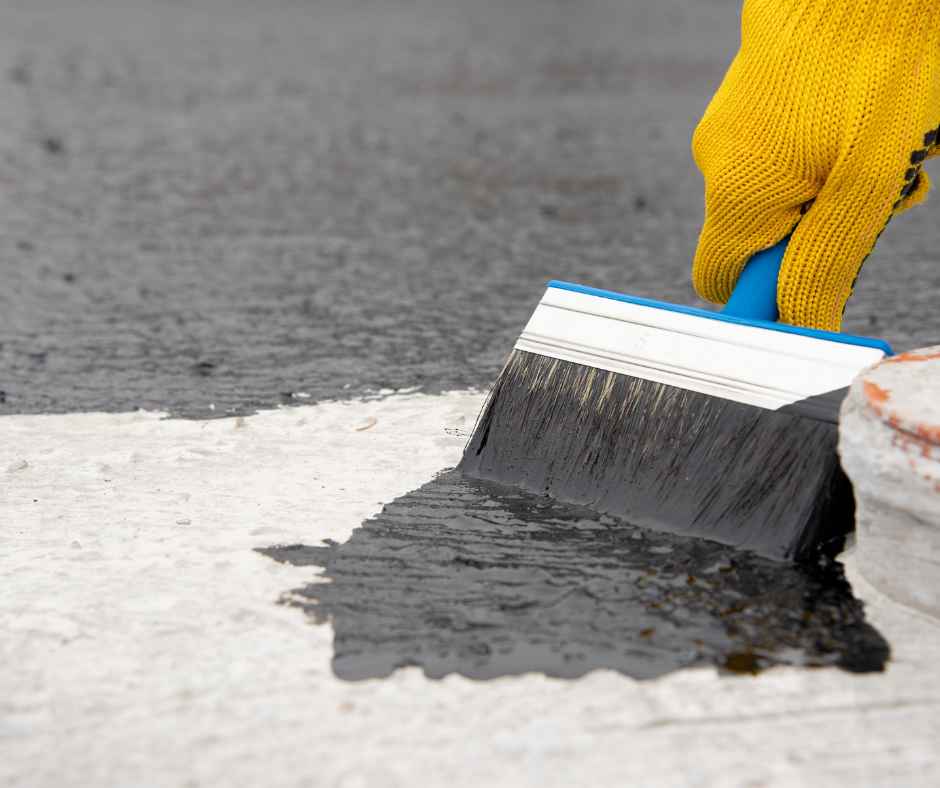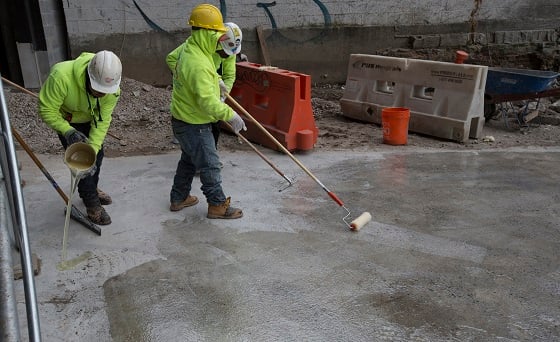Exactly How Waterproofing Works: An In-depth Look at Strategies and Technologies
Waterproofing is essential for securing structures from moisture-related damage. It includes various strategies and technologies that create barriers versus water intrusion. Conventional techniques, such as compacted clay, exist together with modern-day innovations like liquid-applied membrane layers. Comprehending the subtleties of these approaches is essential for effective application. The efficiency of any kind of waterproofing option hinges not just on the techniques made use of yet also on recurring upkeep and assessment. What are the crucial variables that influence lasting performance?
Comprehending the Fundamentals of Waterproofing
Waterproofing is a vital process that protects structures from water breach, which can result in considerable damage in time. This technique entails the application of numerous materials and strategies created to produce a barrier against moisture. The main objective is to prevent water from permeating surface areas, which can create damage, mold and mildew growth, and structural instability.Various elements influence the option of waterproofing approach, including the sort of structure, its location, and ecological conditions. Comprehending the physics of water activity and the buildings of various products is vital in selecting an efficient waterproofing solution.Effective waterproofing not just safeguards structures however additionally boosts their durability and integrity. Generally, it is integrated into the design stage of construction to guarantee complete security. As awareness of water-related concerns expands, the significance of understanding waterproofing basics comes to be progressively clear to designers, builders, and property proprietors alike.
Typical Waterproofing Methods
Standard waterproofing techniques have actually been utilized for centuries, counting on reliable techniques and materials to guard frameworks from water damages. Among the earliest techniques includes making use of clay, which, when compacted, produces a natural obstacle versus moisture. Furthermore, asphalt, a sticky, black product stemmed from petroleum, has actually been utilized for its waterproof buildings, commonly used to roof coverings and foundations.Another strategy includes the application of lime-based plasters, which give a breathable layer that allows dampness to run away while preventing water ingress. Thatch roof covering, a typical technique still seen in some societies, provides exceptional waterproofing because of its securely packed straw layers.Moreover, the use of stone and block has actually been famous, as these products are naturally immune to water when properly set up. Overall, conventional waterproofing techniques emphasize the value of choosing ideal products and building and construction techniques to boost resilience versus water breach.
Modern Waterproofing Technologies
Developments in modern waterproofing modern technologies have transformed the method frameworks are protected from water damages. Ingenious approaches such as liquid-applied membranes and innovative sealers have boosted the effectiveness and adaptability of waterproofing remedies. These innovations allow for seamless application, reducing the threat of leaks and guaranteeing complete insurance coverage over complex surfaces.Moreover, the assimilation of wise technologies, such as dampness sensing units and automated surveillance systems, allows real-time evaluation of waterproofing efficiency. This proactive technique promotes prompt maintenance and decreases lasting repair service costs.Additionally, advancements in spray-applied finishes provide quick application and excellent attachment, adapting to numerous substrates while supplying durable defense. Strategies like polymer-modified systems additionally boost versatility and toughness, making them suitable for varied atmospheres. In general, modern waterproofing modern technologies not just reduce water breach yet additionally contribute to the longevity and sustainability of frameworks, marking a significant shift in the industry.
Products Made Use Of in Waterproofing
The performance of waterproofing services greatly counts on the products used in their application. Various materials are employed to develop barriers against water ingress, each with special residential or commercial properties fit for various settings. Frequently used products consist of membrane layers, finishings, and sealants.Liquid-applied membranes, frequently made from polyurethane or acrylic, form a seamless barrier that adjusts to complex surface areas. Sheet membrane layers, commonly created from rubber or thermoplastic, deal toughness and are suitable for larger areas. Additionally, cementitious waterproofing materials, composed of cementitious compounds, provide outstanding attachment and flexibility.Sealants made from silicone or polyurethane are necessary for joints and joints, making certain thorough defense. Additionally, sophisticated products, such as geo-composite membranes, integrate numerous features, boosting performance. Generally, the option of waterproofing products is vital in accomplishing long-lasting and reliable water resistance, customized to certain task demands and ecological problems.
Common Applications of Waterproofing
Waterproofing plays a necessary role in various fields, guaranteeing the durability and stability of structures. Common applications consist of residential options that secure homes, business facilities that safeguards companies, and commercial setups that call for durable protection against dampness. Understanding these applications highlights the importance of waterproofing in maintaining both security and capability across various environments.
Residential Waterproofing Solutions
Lots of home owners encounter difficulties with wetness breach, making efficient property waterproofing services crucial. Different techniques exist to address this issue, consisting of exterior and interior waterproofing systems. Inside solutions often include the application of sealers and finishes to basement wall surfaces, which assist protect against water seepage. Exterior methods commonly consist of the setup of drain systems and water resistant membrane layers that divert water far from the foundation.Additionally, home owners may think about sump pumps to remove water accumulation and dehumidifiers to regulate moisture levels. Appropriate grading and using gutters also play an essential duty in handling water circulation around the home. By executing these methods, property owners can significantly reduce the threat of water damages and mold and mildew development, making certain a dry and secure living setting.

Industrial Facilities Defense
Efficient waterproofing options play an important function in the defense of business infrastructure. Sump pump discharge drainage Omaha. These strategies are essential for securing buildings, parking frameworks, and bridges from water damages, which can endanger architectural stability and result in expensive repair services. Usual applications include the installation of membranes, coverings, and sealants that produce obstacles versus see dampness seepage. Locations such as basements, roofing systems, and outside wall surfaces are typically focused on to ensure long life and durability. In addition, waterproofing systems can boost power performance by preventing water-related issues that might cause mold development and wear and tear. By implementing durable waterproofing steps, residential or commercial property proprietors can secure their investments and preserve functional efficiency, ultimately adding to the overall sustainability of business facilities
Industrial Applications Review
While various fields deal with distinct obstacles, the need for reliable waterproofing services continues to be a constant in commercial applications. Industries such as manufacturing, building, and power commonly encounter settings where moisture direct exposure can jeopardize structural stability and functional effectiveness. In producing centers, waterproofing is crucial for shielding machinery and materials from water damages. In building and construction, it safeguards foundations and basements versus groundwater seepage. The power field depends on waterproofing for the protection of devices in hydroelectric plants and offshore frameworks. In addition, food handling sectors utilize waterproofing to assure health and conformity with safety and security standards. On the whole, efficient waterproofing remedies are essential for boosting durability, safety, and performance across different commercial setups.
Upkeep and Durability of Waterproofing Solutions
Waterproofing services are created to use long-lasting protection against dampness breach, regular upkeep is crucial to assure their effectiveness and longevity. Routine assessments play a significant role in identifying possible issues such as fractures, peeling off, or indications of water damage. Dealing with these problems without delay can protect against additional degeneration and expensive repairs.Additionally, cleaning the surface area of waterproof areas assists get rid of dust and debris that might compromise the stability of the waterproofing obstacle. It's also advisable to reapply protective coverings or sealants as recommended by manufacturers to maintain visit this site right here perfect performance. Ecological variables, such as UV direct exposure and severe weather, can influence the lifespan of waterproofing materials, making routine analysis crucial
Often Asked Inquiries
Can Waterproofing Be Applied in Cold Weather Condition?
The concern of using waterproofing in chilly weather increases issues concerning attachment and curing. Several items may not do at their best in reduced temperature levels, necessitating cautious choice and factor to consider of details guidelines for efficient application.
For How Long Does Waterproofing Commonly Last?
The duration of waterproofing performance varies based on materials and environmental aspects. Normally, it can last from five to 10 years, however regular maintenance and evaluations are important to guarantee peak efficiency and long life.
Is Do It Yourself Waterproofing Effective and Safe?
The efficiency and safety of DIY waterproofing rely on various elements, including material top quality and application method. While some people attain adequate results, others might encounter issues that endanger long-term protection and structural honesty.
What Are the Indications of Failing Waterproofing?
Signs of stopping working waterproofing consist of noticeable water spots, peeling off paint, mold development, musty smells, and wetness in walls or ceilings - Basement waterproofing Omaha. These indications recommend jeopardized barriers, go right here demanding timely evaluation and potential removal to stop more damages
Exactly how Do I Pick the Right Waterproofing Professional?
